#fuzzy petiole
Text
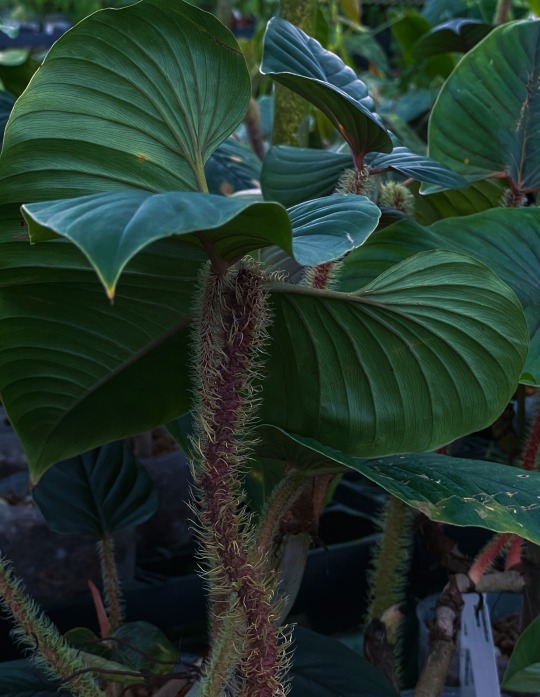
#plants#plants of tumblr#plantblr#lightroom#florida#iphone photography#photography#original photography#photographers on tumblr#philodendron#philodendron serpens#fuzzy petioles#hairy philodendron#hairy plants#horticulture#botany#botanist#greenhouse#ecuagenera
35 notes
·
View notes
Text
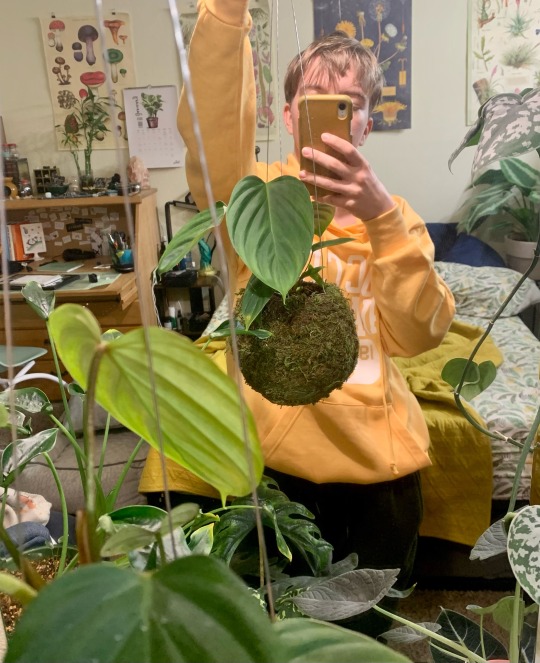
new philo fuzzy petiole that the nursery had already potted up in a kokedama ball 🥰
13 notes
·
View notes
Text

Fuzzy Petiole Philodendron finally repotted!
It wasn't holding onto water much anymore, drying out very quickly. There were more roots than soil in that old pot! Much better now ✨
#cottageblr#plantblr#plant parent#gardening#philodendron#fuzzy petiole philodendron#houseplants#dark cottagecore#house plants#plants#indoor plants#house plant#plant life#indoor garden#indoor gardening#plant room#gardenblr
6 notes
·
View notes
Text
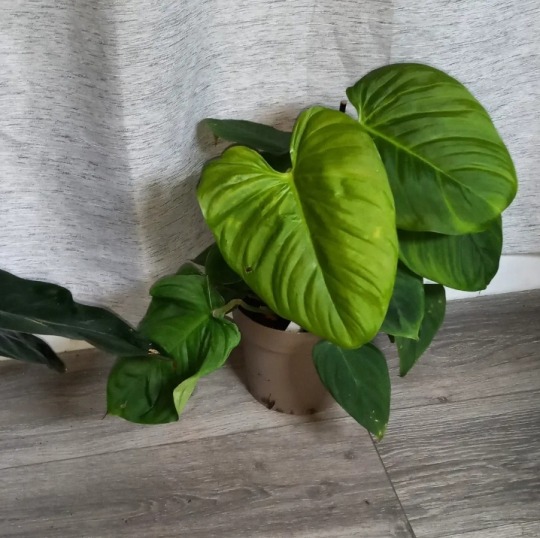

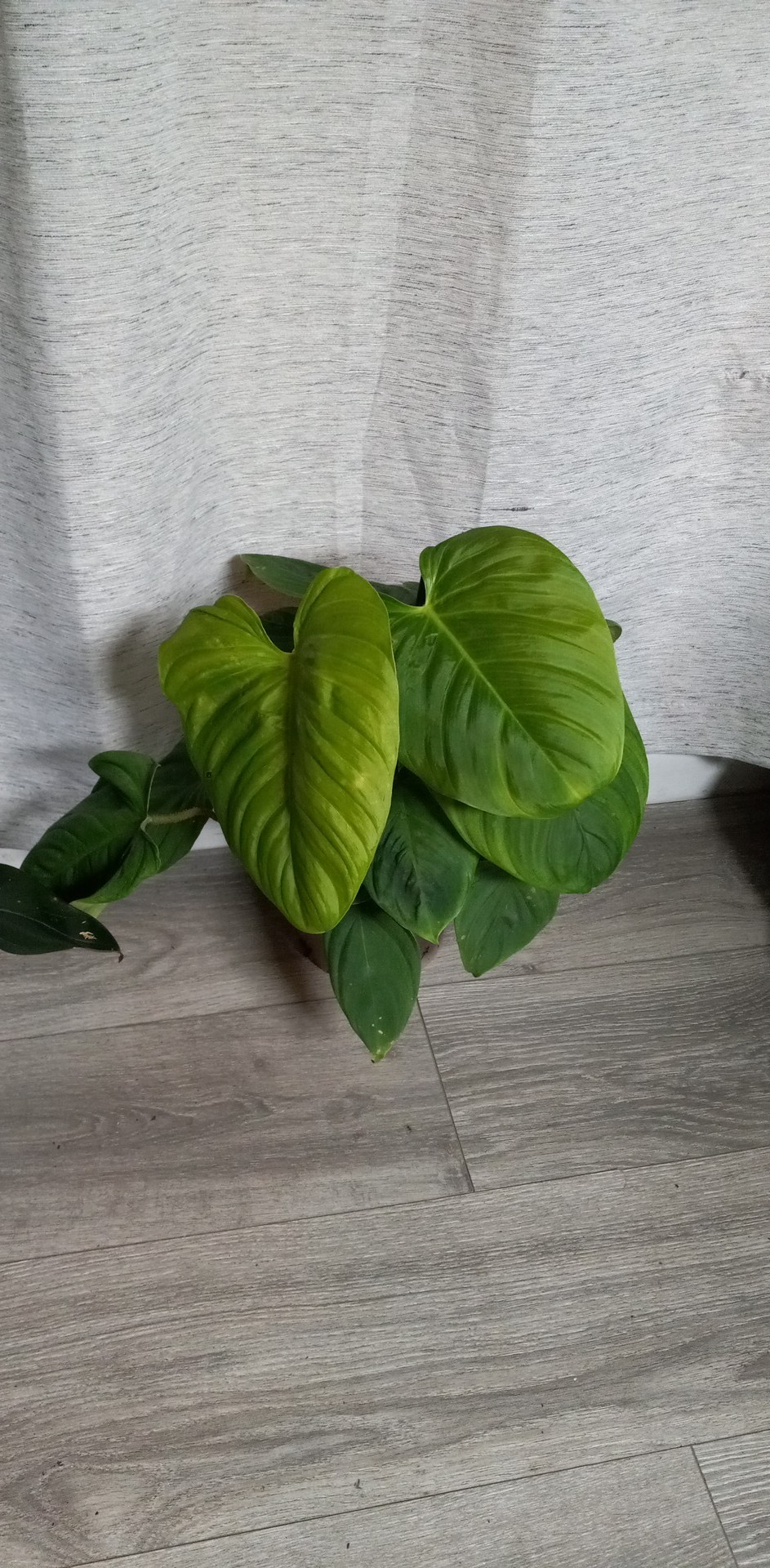
philodendron sp. 'fuzzy petiole'
#shes soooooo big and velvety i could die#houseplant#houseplants#indoor plants#plant collection#philodendrons#philodendron#philodendron fuzzy petiole#plantblr
2 notes
·
View notes
Text
Now grow some roots 😬

3 notes
·
View notes
Text
youtube
#plantblr#plantlife#plants#youtube#plant mom#planting#plantlover#gardenblr#philodendron#philodendron fuzzy petiole#how to#houseplants 101#houseplants#indoor plants#aroidlover#aroidaddicts#aroidsofinstagram
0 notes
Text
https://www.instagram.com/reel/CwqDauBu-lc/?igshid=MzRlODBiNWFlZA==
What’s you’re favorite way to propagate?
#plantblr#plant blog#plant diary#houseplants#plant love#chop and prop#propagation#propagation station#philodendron sp fuzzy petiole#philodendron
0 notes
Text
How to Identify Western Sword Ferns
Originally posted at my blog at https://rebeccalexa.com/how-to-identify-western-sword-ferns/. Click here to learn more about the How to Identify article series.
Name: Western sword fern (Polystichum munitum)
Range and typical habitat(s): West coast of North America from southern California to extreme southern Alaska, and inland to the western Rockies in Idaho; also introduced to a few places in the United Kingdom and Ireland. Widespread through conifer forests at low elevations; while it is most commonly part of the understory of these forests, it may sometimes be found in nearby open areas as an early succession pioneer after disturbance.

Distinguishing physical characteristics (size, colors, overall shapes, detail shapes): This is a large fern, with individual fronds up to six feet long; the entire plant may be six or more feet across in very large specimens. The overall shape of younger plants may be a sort of “fountain” formation; with age and size some of the stems begin to droop downward, giving the overall plant more of a spherical or semi-spherical appearance. The leaves are a medium to medium-dark green; the spore-bearing sori on the underside are a rusty brown.

Underside of leaves showing sori. By brewbooks, CCA-SA-2.0
Each frond consists of a single stem (rachis). This rachis is round, solid inside, and may have a deep furrow down the center. It is green with rust-brown flecks along its length. Individual leaves (pinnae) grow in an alternate pattern along the stem; alternate means that one grows on one side, and then the next on the other just a little further down the rachis, and then the next on the first side a little further down, etc.) Almost the entire rachis is covered in leaves, except for a few inches at the base. Several of these may grow out of the same root/rhizome system, clustered close together, with dead growth from previous years lying on the ground at the plant’s base.

The sword fern is what’s known as single pinnate, meaning that there are leaves arranged in pairs along a single rachis, but those leaves are not further divided into smaller leaflets. Each leaf is lance-shaped with a pointed tip and finely serrated edges. The leaf has a main central vein, with smaller veins branching off of it in pairs, one on each side. On the underside of the leaf, the sori look like little brown fuzzy circles. They are arranged quite closely to each other in two rows, one row on either side of the central vein of the leaf. Each leaf varies from less than an inch to six inches long; the larger leaves are closer to the base of the stem, and get smaller toward the tip. The last few leaves near the tip may not be fully separated from each other. The leaves are attached to the rachis by very slender, short stems (petioles) at their base. The tips of some of the leaves may point away from the center/base of the plant, toward the end of the rachis.
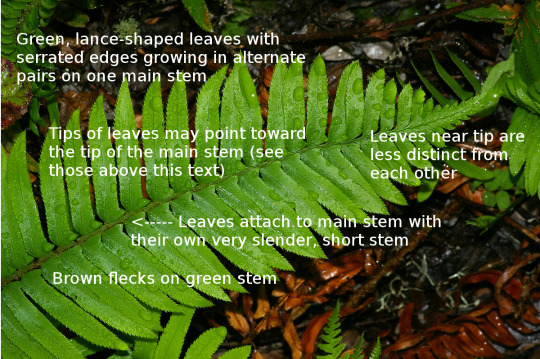
Other organisms it could be confused with and how to tell the difference: While western sword fern tends to be the most common Polystichum species in its range, there are a few other species of the genus that overlap. You’ll need to look at small details to tell the difference; for example, P. imbricans can be distinguished from P. munitum by examining the leaves in relation to the main stem. In P. imbricans, the leaves are actually rotated on their petioles so that they are perpendicular to the stem like rungs on a ladder, rather than growing “flat”:
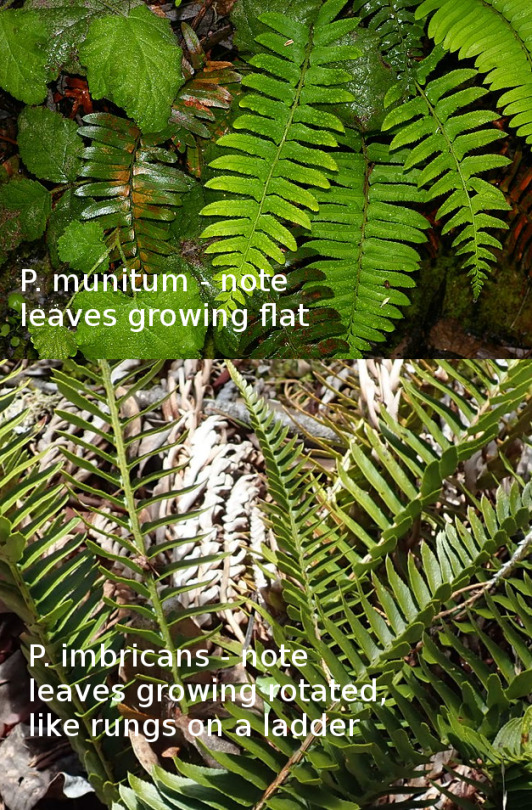
In addition to paying attention to small differences in things like leaf shape and arrangement, you also want to note where you saw the fern in question. Not every look-alike Polystichum species will be found in every part of western sword fern’s range; P. californicum, for example, only grows from southernmost British Columbia to central California. If you don’t have access to field guides, create a free account on iNaturalist. You can use the Explore function on the phone app or computer browser to see where people have logged observations of just about any species of living being you can think of; while it isn’t as exact as a formal range map, it’s a good substitute for casual use.
Finally, there are other ferns outside of the genus Polystichum that can also be confused with western sword fern. A good example is deer fern (Struthiopteris spicant). While it also has a cluster of individual fronds, each composed of a central rachis with pairs of leaves on either side, deer fern is smaller than western sword fern. A closer look shows that the leaves of deer fern are attached to the rachis by their entire bottom edge (sessile), rather than by a petiole:
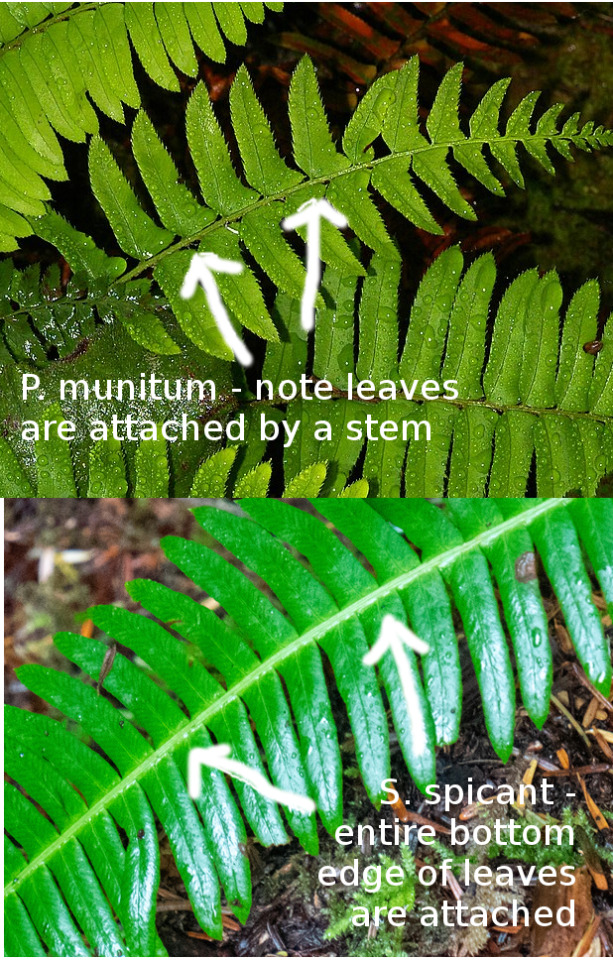
Also, deer ferns have specially adapted “fertile” leaves that look different from the rest; western sword ferns lack these. These consist of a dark, tall rachis that has thinner, more widely spaced leaves; these lift the sori higher above the rest of the plant so that the wind can more easily blow away the spores. Their resemblance to deer antlers gives this fern its name:

A good quick guide that may help with distinguishing western sword fern from others in its range is Pacific Fern Finder by Glenn Keator. While it isn’t absolutely complete, it covers the more common species and is a dichotomous key that helps you narrow down your options by looking at various physical characteristics of the fern you’re trying to identify.
Anything else worth mentioning? Western sword ferns are not among the few species whose fiddleheads (young, curled-up fronds) are safe to eat. Reportedly the rhizomes have historically been used as a last-resort food source by some indigenous people. However, concerns about carcinogens mean this plant should not be considered a regular edible.
10000 Things of the PNW has a more detailed write-up of this species here.
Further reading:
Native Plants PNW: Western Sword Fern
OSU Extension’s Tourism Blog: Western Sword Fern
CalScape: Sword Fern
10000 Things of the Northwest: Polystichum imbricans (as a comparison to P. munitum)
Did you enjoy this post? Consider taking one of my online foraging and natural history classes, checking out my other articles, or picking up a paperback or ebook I’ve written! You can even buy me a coffee here!
#ferns#nature#PNW#Pacific Northwest#plants#botany#biology#forest#forestcore#naturecore#ecology#nature identification#How to Identify#long post#foraging#educational#outdoors#natural history#scicomm#science communication
133 notes
·
View notes
Note
Care tips on growing baby gloriosum or other rare philo babies? I have a fuzzy petiol baby but it's been struggling.
This is my first gloriosum, but I let all of my philodendrons dry out pretty well before they get any water. I have this one a foot or so back from a very hot western window. I also keep them all in terra cotta pots with a chunky well draining soil mix.
3 notes
·
View notes
Text

My Philodendron Verrucosum is one of my absolute favorite plants. The velvety leaves, the fuzzy petioles and that red on the new leaves is just gorgeous! 😻
#philodendron verrucosum#philodendron#houseplants#plant person#plants on planks#new leaves#philodendron micans
3 notes
·
View notes
Text

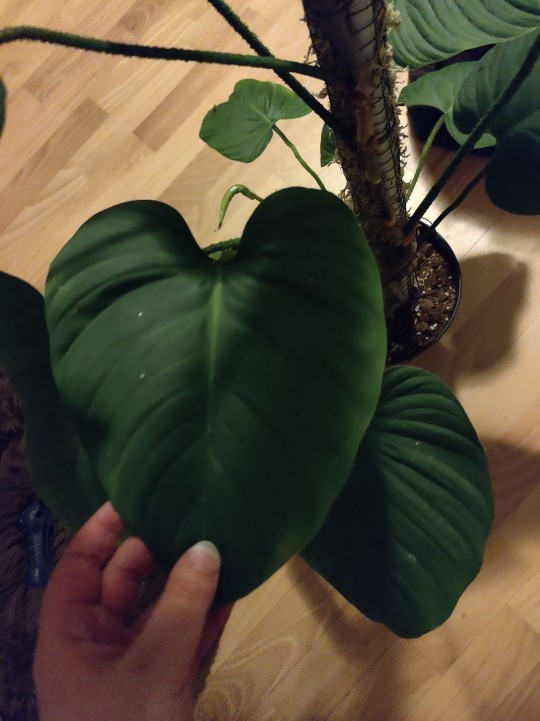
god this big fuzzy petiole philodendron today :D and for its size and the moss pole it was pretty cheap i'm glad
1 note
·
View note
Text
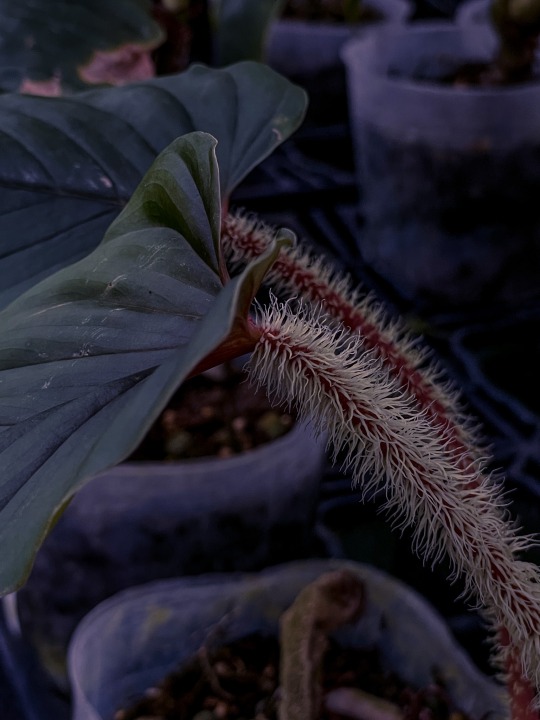
#photography#iphone photography#original photography#photographers on tumblr#plants#plantblr#lightroom#philodendron#Ecuagenera#hairy plants#hairy philodendron#philodendron Serpens#fuzzy petioles
28 notes
·
View notes
Text
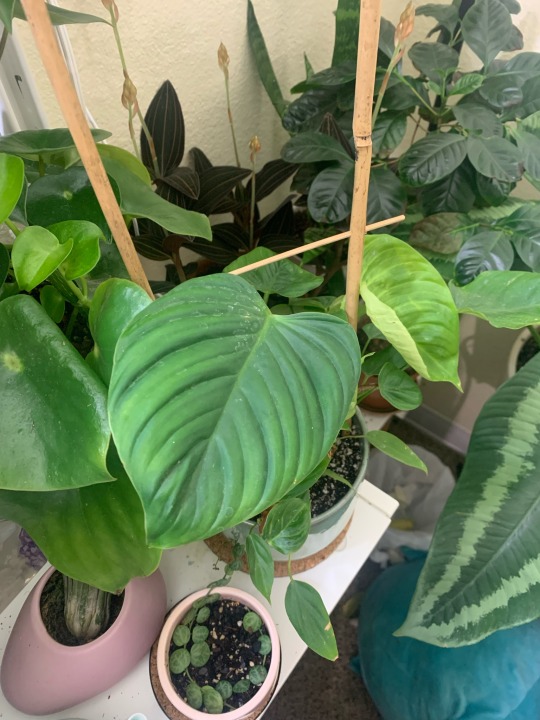
aquired a philodendron ‘fuzzy petiole’ yesterday. they are basically my favorite color and i’m so excited to help it get big
9 notes
·
View notes
Text
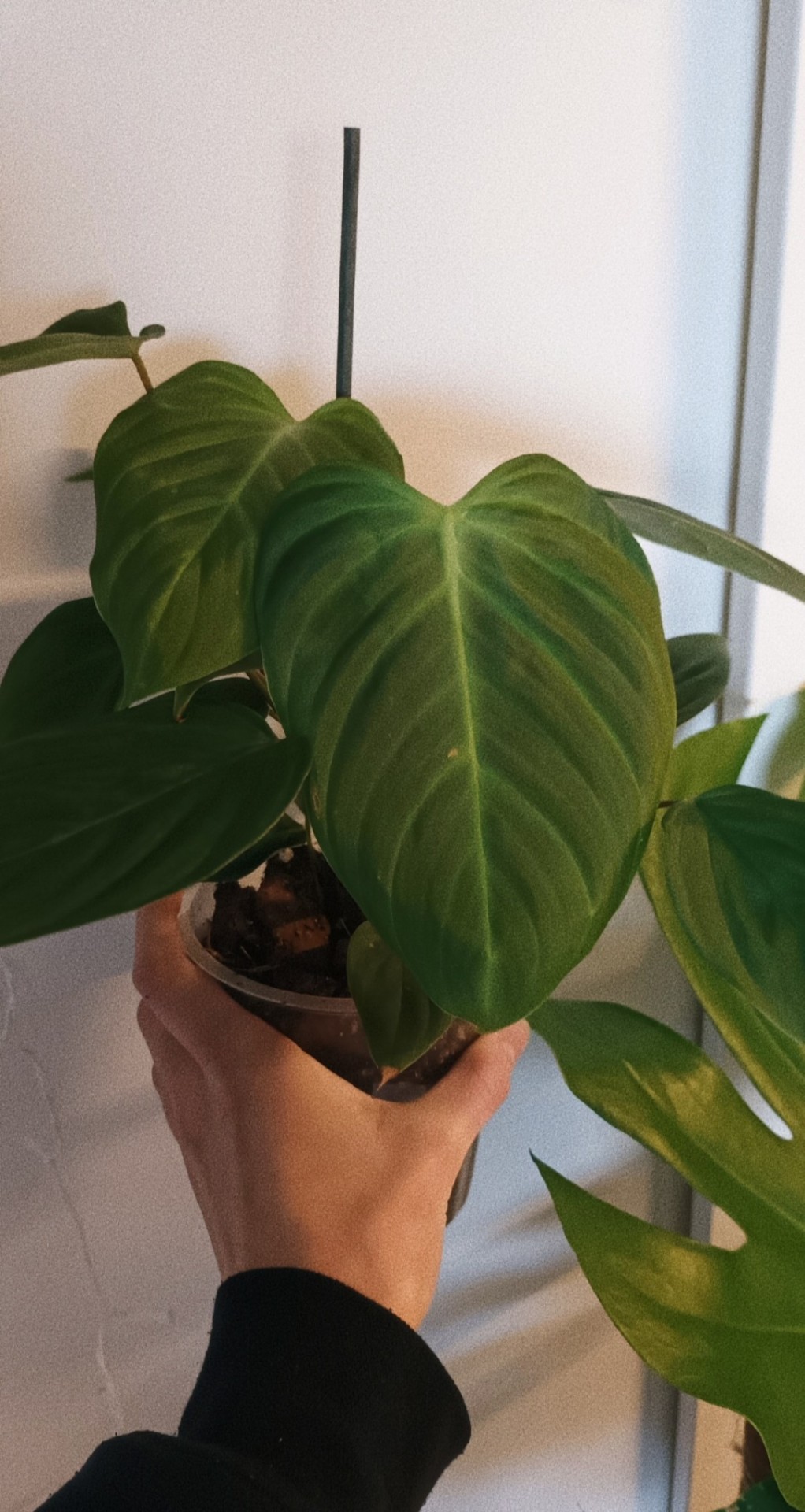
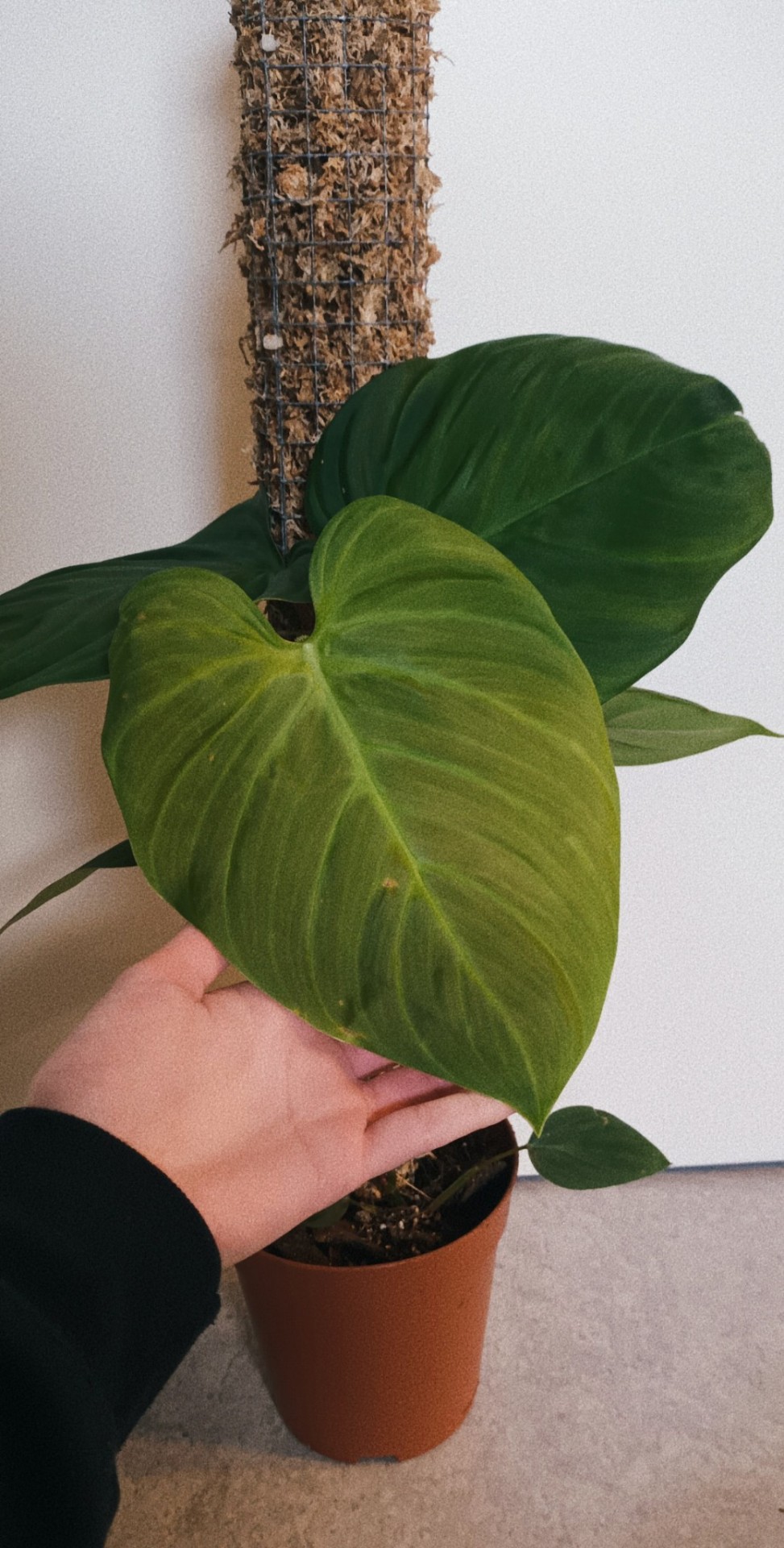
4 notes
·
View notes